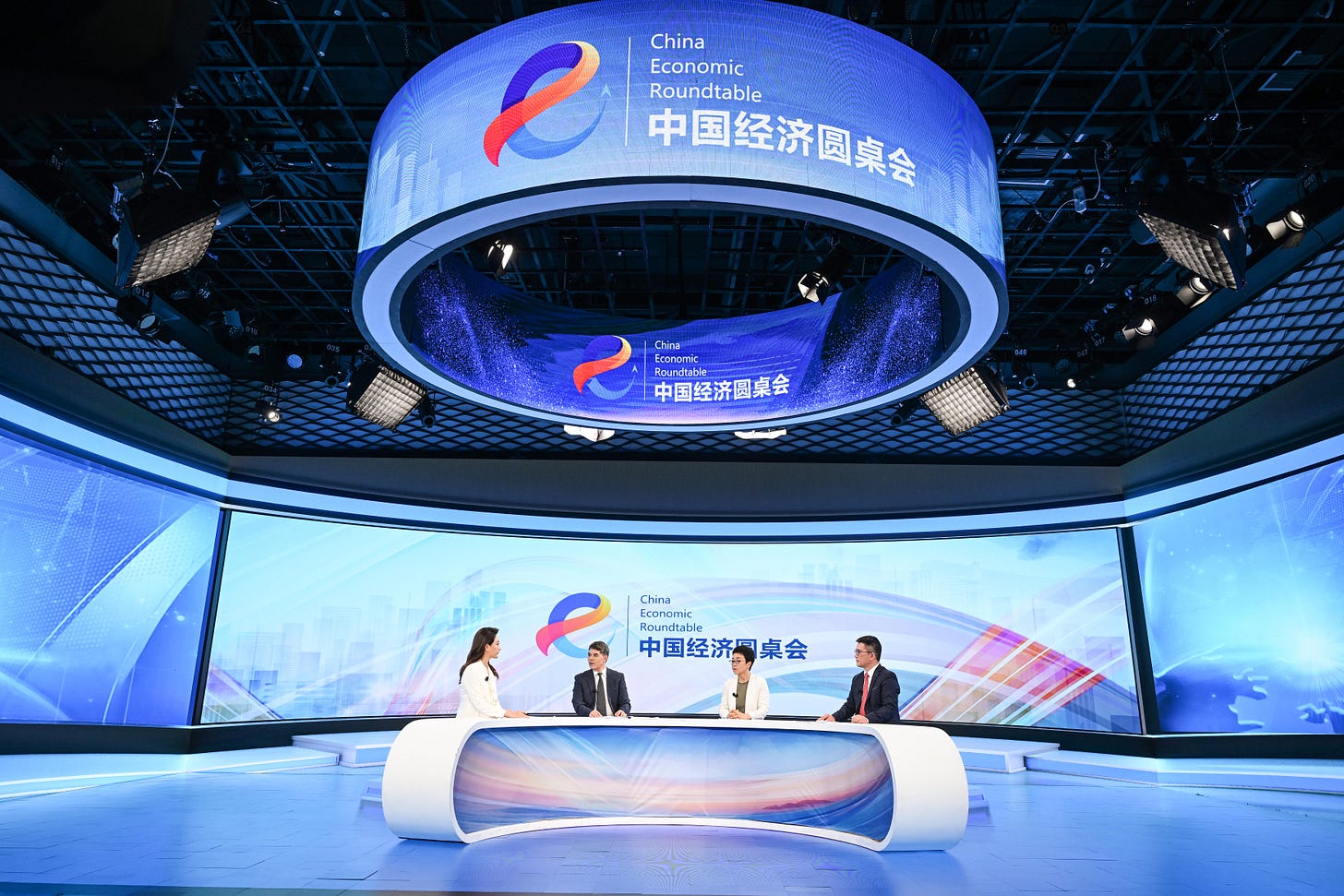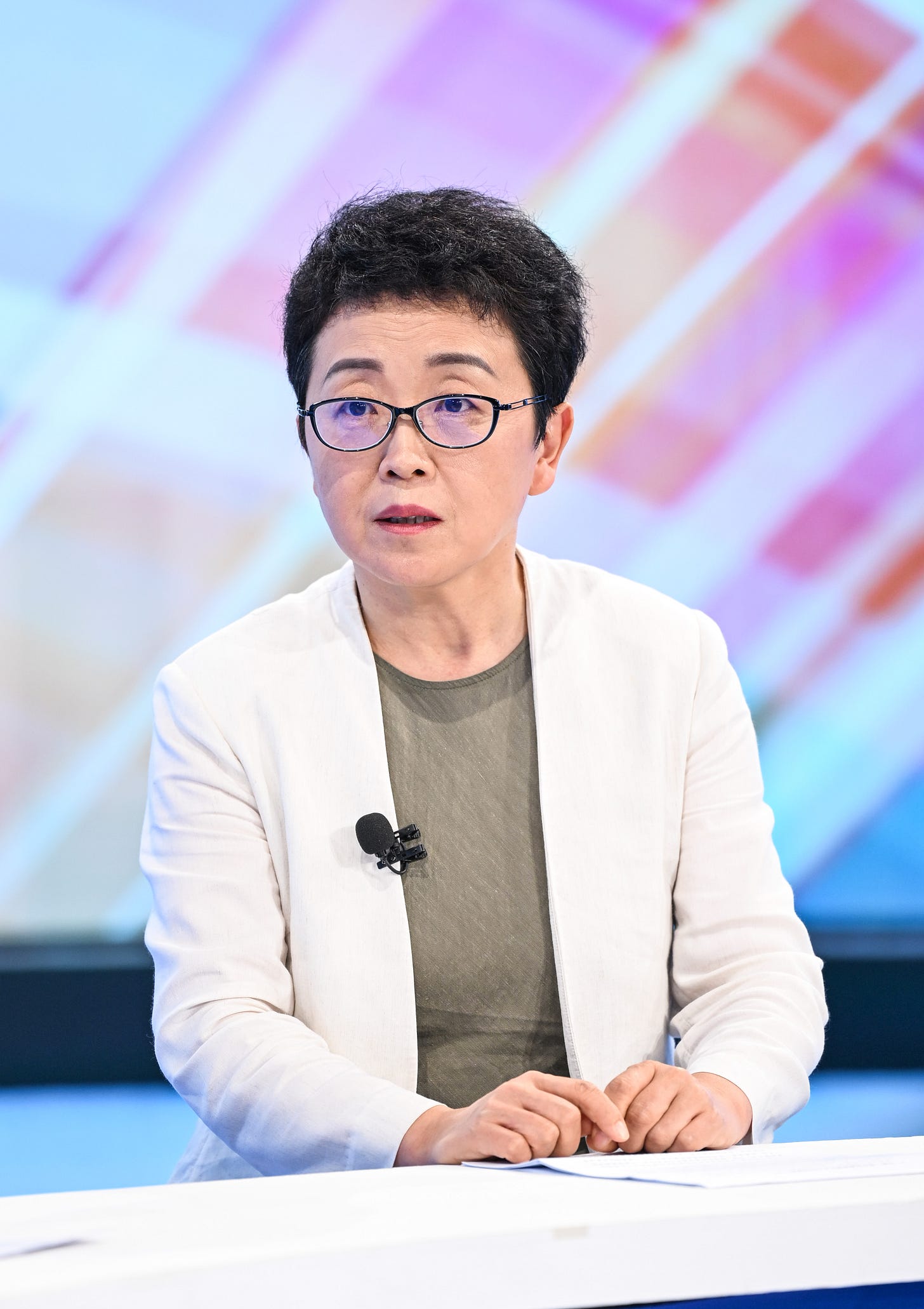Unveiling New Concepts: How is "new quality productive forces" reshaping China?
New quality productive forces, a lexicon of President Xi Jinping, has become a catchphrase mirroring China's ongoing efforts to seek higher productivity and greater economic resilience.
As an essential piece of puzzle for fostering China's high-quality development, the "new quality productive forces (新质生产力)," a trending buzzword in China's economic sector, has been gaining steam, showcasing China's determination of pursuing sci-tech innovation.
First introduced in 2023, new quality productive forces refer to advanced productivity freed from the traditional economic growth mode and productivity development paths. It features high-tech, high efficiency and high quality, and comes in line with the new development philosophy.
You may refer to a Xinhua story Xictionary: New quality productive forces for its official explanation.
In this post, Peking Ensight recommends the latest episode of the China Economic Roundtable hosted by Xinhua News Agency, which sheds lights on questions such as what are the core elements of the "new quality productive forces"? Could the concept be equal to sci-tech innovation? How to foster the development of the new quality productive forces?
Roundtable speakers include:
Liu Dongmei, secretary of the Party Committee of the Chinese Academy of Science and Technology for Development
Huang Hanquan, head of the Chinese Academy of Macroeconomic Research under the National Development and Reform Commission
Wang Jinxia, deputy director of the Qianhai Authority
INNOVATION CENTERED
The new strategy comes amid China's push for high-quality development and the surging tide of new scientific revolution and industrial transformation, Liu Dongmei said on the show.
Scientific and technological innovation is the core of the new quality productive forces, and through sci-tech innovation, especially the innovation of breakthrough and disruptive technologies, new growth impetus can be provided for economic development, Liu said.
"From the perspective of industries, a modern industrial system is the carrier of new quality productive forces, and we can promote the upgrading of traditional industries by relying on technological progress, cultivate and develop emerging industries and future industries, which can enhance the safety and resilience of our entire industrial system," according to Liu.
China's overall strength in science and technology innovation has steadily improved in recent years, with the country's research and development (R&D) expenditure exceeding 3.3 trillion yuan (about $463.5 billion) in 2023, an increase of 8.1 percent year on year.

To better serve sci-tech innovation and support new quality productive forces, China's top securities regulator announced eight new measures to further reform its Nasdaq-style Science and Technology Innovation Board (STAR) market of the Shanghai Stock Exchange.
Considering that enterprises cultivating new quality productive forces often demand high and sustained investment and face uncertainties in research and development and commercial application, the China Securities Regulatory Commission pledged to improve institutional inclusiveness and encourage high-quality tech firms that are yet to make profits to list on the STAR market.
6G, artificial intelligence, quantum technology, electric vehicles... The cutting-edge technologies have been changing China's industrial system, forging the new quality productive forces into the future.
MORE THAN SCI-TECH INNOVATION
Although technology innovation is vital for the development of the new quality productive forces, it requires more than technology. There are other features that which could be crucial for its development, such as talents, the upgrade of traditional industries and the sci-tech service sector.
At the roundtable, both Huang and Liu highlighted the role of talent management in driving technological innovation. In Liu's point of view, China's total number of sci-tech-related personnel comes first in the world, but from the perspective of talent structure, it still not be able to meet the needs of the development of new quality productive forces.
Therefore, efforts need to be made to create a more enabling environment for innovation to attract more talents to work and live in China, reform the education system to nurture more future scientists, craftsmen and engineers, and improve evaluation systems to encourage long-term basic research, Liu said.
Huang noted during the discussion that the development of the new quality productive forces covers both emerging industries and traditional industries, and that innovation involves technologies as well as institutions and management.
"Sci-tech and institutional innovations are like two wheels propelling the growth of China's total factor productivity," Huang said at the roundtable.
Traditional industries account for about 80 percent of the entire industrial system, serving as its cornerstone and largest base, said Huang.
Liu said that without the sound development of traditional industries, the emerging and future industries might face the risks of supply chain disruption.
On the other hand, new technologies and processes arising from the development of emerging and future industries can in turn benefit traditional industries. "We believe that they are complementary, and are able to mutually integrate with one another," she said.
Wang Jinxia, deputy director of the Qianhai Authority, emphasized on the show that the sci-tech service industry provides solid support in forming new quality productive forces.
Last year, the global market for science and technology services totaled 7.6 trillion U.S. dollars, of which the United States accounted for 41 percent, followed by 32 percent by the European Union, and China accounted for 13 percent. Moreover, the proportion of foreign investment in sci-tech services in China was only 3 percent, which is still relatively low, according to Wang.
Wang called for efforts in deepening the comprehensive reform of sci-tech innovation and service management to create a service industry with new quality productive forces in the process of such comprehensive reforms.
"Through the accumulation of new business models, new patterns and new directions of this service industry, we can ensure the formation of long-term capital, patience capital, and technology capital, and embark on a new path for the technology service industry to support disruptive technological innovation and create unconventional leapfrog high-quality development." Wang said.
REFORM IS NECESSARY
During the exploration of the path to the new quality productive forces, obstacles were revealed. Measures are required to tackle these challenges and further remove the bottlenecks.
Institutional reforms in the field of science and technology are believed as a must to remove the obstacles that are smothering the innovation leading to greater productivity, Liu noted.
She said that one crucial aspect of these reforms lies in the coordination among different departments in terms of formulating strategy, allocating resources, and the layout of major facilities to maximize the efficiency of resource utilization, as technological innovation relies heavily on the synergy among multiple factors, including technological and financial ones.
Echoing Liu's views, Huang said institutional reforms ought to be multifaceted and comprehensive, thereby facilitating the smooth flow of high-quality factors like capital, data and talent toward high-quality productive forces.
Huang also underscored the need to reform the sci-tech system to encourage inputs into basic research for more original and disruptive achievements, and to reform services to expedite the application of technological advancements, transforming them into tangible productivity.
For the transformation and upgrading of traditional industries, Huang said, cutting-edge technologies should be utilized so that traditional industries will be transformed in the direction of intelligence, green, integration and high-end. "The space and potential traditional industries' transformation still remains huge."










